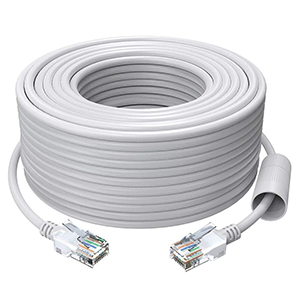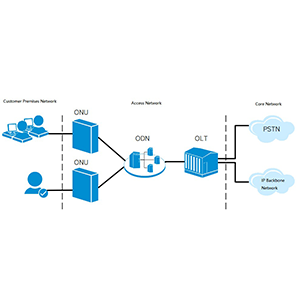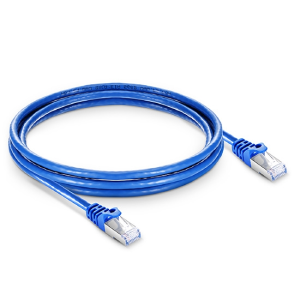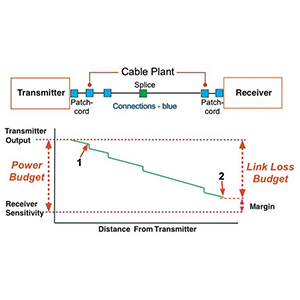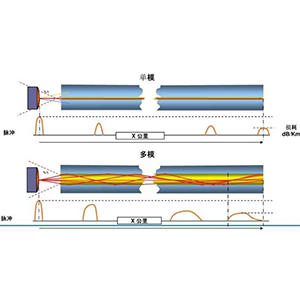Welcome to read this article, I will introduce you to the basic concepts, working principles and applications of OS3 optical fiber in different fields. As a single-mode optical fiber, OS3 optical fiber has the characteristics of long-distance transmission and high-speed network.
In this article, I will explain the definition and basic principles of OS3 optical fiber to help you understand how it achieves reliable optical signal transmission. At the same time, I will also explain the characteristics and uses of OS3 optical fiber as a single-mode optical fiber, so that you can understand its importance in the communication field.
OS3 optical fiber introduction
Definition and rationale:
OS3 optical fiber is a single-mode fiber (Single-Mode Fiber, SMF for short), which is used in optical communication and data transmission. It is an optical fiber with a smaller core diameter that allows light signals to be transmitted in a single mode. OS3 optical fiber is commonly used in high-speed, long-distance optical fiber communication systems.
OS3 optical fiber works based on the principle of total internal reflection of light. Optical signals are transmitted through the fiber’s core, which is a very elongated piece of glass or plastic material with a small diameter, typically 9 μm. Optical signals are transmitted in optical fibers by total reflection. When the optical signal enters the optical fiber at an appropriate angle, it is reflected by the material inside the core and propagates along the optical fiber. This single mode transmission ensures signal transmission quality and transmission distance.
Fiber type:
As a single-mode fiber, OS3 fiber has the following characteristics and uses:
-
Small core diameter: The core diameter of OS3 fiber is small, usually 9 μm. This enables it to support higher bandwidth and longer transmission distances, making it suitable for long-distance, high-speed data transmission.
-
High transmission performance: Due to the single-mode transmission, OS3 optical fiber has low transmission loss and dispersion, which enables it to achieve high-quality signal transmission. This is important for applications requiring high reliability and high-speed transmission.
-
Long-distance transmission: OS3 fiber has lower signal attenuation and dispersion, allowing it to support long-distance transmission. It is widely used in long-distance optical fiber communication networks, such as communication links across cities or intercontinents.
-
High-speed data transmission: Due to the small core diameter and optimized transmission characteristics, OS3 optical fiber can support high-speed data transmission, including 10G, 40G, 100G and even higher rate data transmission.
-
Remote monitoring and sensing applications: Due to the high transmission performance and low loss of single-mode fiber, OS3 fiber is also widely used in remote monitoring and sensing applications, such as fiber optic sensors, fiber optic temperature measurement and fiber optic pressure sensors.
In general, OS3 optical fiber, as a single-mode optical fiber, plays an important role in high-speed, long-distance and high-reliability optical communication applications. It provides excellent transmission performance and large bandwidth, making it an important part of modern optical fiber communication networks.
Application fields of OS3 optical fiber
Long distance transmission:
OS3 optical fiber is widely used in long-distance data transmission and is suitable for long-distance communication and network connection needs. The following are the main applications of OS3 optical fiber in long-distance transmission:
-
Long-distance optical fiber communication: OS3 optical fiber is used for long-distance optical fiber communication links across cities, intercontinental or international. Its low loss and excellent transmission performance enable it to provide high-quality signal transmission over long distances.
-
Optical fiber backbone network: OS3 optical fiber plays an important role in building the optical fiber backbone network. Optical fiber backbone network is a large-scale optical fiber network used to connect communication facilities in different regions, cities and countries, providing high-speed and stable transmission of data and communication traffic.
-
Submarine optical cable: OS3 optical fiber is also widely used in submarine optical cable systems to connect optical fiber communications between different countries and regions. OS3 optical fiber plays an important role in undersea communications due to its ability to support long-distance transmission and its resistance to undersea environments.
High-speed Internet:
OS3 fiber optics are widely used in high-speed networks, supporting high-bandwidth and low-latency data transmission. The following are the main applications of OS3 optical fiber in high-speed networks:
-
Data center interconnection: OS3 optical fiber is used to connect high-speed interconnections between data centers. Data centers usually require large amounts of data transmission and fast interconnection. OS3 optical fiber provides high-speed, low-latency transmission performance to meet the high bandwidth requirements between data centers.
-
High-speed Internet access: OS3 optical fiber is used to provide high-speed Internet access services. It can support high-speed data transmission and meet users’ needs for fast and stable network connections. It is suitable for scenarios such as enterprises, schools, hospitals, and homes.
-
High-performance computing: OS3 optical fiber has important applications in the field of high-performance computing. High-performance computing systems require fast and reliable data transmission. OS3 optical fiber provides high-speed, low-latency connections and supports large-scale data processing and parallel computing.
-
Video transmission and streaming media: OS3 optical fiber is widely used in video transmission and streaming media applications. High-definition video, online live broadcast, and video conferencing have high requirements for high bandwidth and low latency. OS3 optical fiber provides stable transmission performance and ensures high-quality video and audio transmission.
Overall, OS3 optical fiber has a wide range of applications in long-distance transmission and high-speed networks. It is widely used in long-distance communications, optical fiber backbone networks, submarine optical cables, data center interconnections, high-speed Internet access, high-performance computing, and video transmission and streaming media to provide high-speed and reliable data transmission for various application scenarios. solution.
Performance parameters and characteristics of OS3 optical fiber
Transmission distance:
OS3 optical fiber has long transmission distance characteristics and can support transmission capabilities of up to tens of kilometers. This is determined by the following factors:
-
Low transmission loss: The core and cladding design and material selection of OS3 optical fiber enable it to have low transmission loss. During the signal transmission process, the optical signal is reflected by the fiber core, and the loss mainly comes from the material absorption and scattering of the fiber core and cladding. The design and manufacturing process of OS3 optical fiber reduces these losses, allowing optical signals to be transmitted over longer distances with virtually no attenuation.
-
Precise refractive index control: The core and cladding materials of OS3 fiber have precise refractive index control to ensure that the optical signal can be totally reflected in the core. This refractive index control ensures the propagation path of the optical signal in the fiber core to reduce attenuation and signal distortion, thereby achieving longer transmission distances.
Bandwidth and loss:
OS3 optical fiber has the characteristics of high bandwidth and low transmission loss to ensure the reliability and quality of signal transmission.
-
High bandwidth: OS3 fiber has a smaller core diameter, typically 9 μm, which enables it to support higher bandwidth. The smaller core diameter reduces the dispersion effect caused by multi-mode transmission, allowing optical signals to transmit data at higher frequencies, thereby achieving high-bandwidth transmission.
-
Low transmission loss: The transmission loss of OS3 optical fiber is very low. The selection of core and cladding materials and the optimization of the manufacturing process ensure that optical signals are almost not attenuated during transmission. Low transmission loss ensures stable signal transmission and the feasibility of long-distance transmission.
Based on the above characteristics, OS3 optical fiber can achieve high-bandwidth signal transmission over longer distances while maintaining low transmission loss. This makes it play an important role in application scenarios such as long-distance communications, optical fiber backbone networks, and submarine optical cables, and meet the needs of high-speed and reliable data transmission.
Installation and maintenance of OS3 optical fiber
Optical cable installation:
Installing OS3 fiber requires following a series of steps to ensure the cable is properly connected and secured. The following are general installation guidelines for OS3 Fiber:
-
Optical cable connection:
a. Determine the connection point: Determine the starting point and destination point of the optical cable to determine the path and length of the optical cable.
b. Prepare connection equipment: Prepare necessary connection equipment such as optical fiber connectors, distribution frames or terminal equipment.
c. Connect the fiber core: Precisely cut the core of each optical fiber and install the fiber optic connector.
d. Connecting equipment: Insert the optical fiber connector into the corresponding connecting equipment to ensure that the connection is stable and correct. -
Optical cable fixation:
a. Determine the path of the optical cable: Determine the path of the optical cable to avoid excessive bending or external compression.
b. Fiber optic cable protection sleeves: Use protective sleeves or sheaths where needed to cover and protect fiber optic cables.
c. Secure fiber optic cables: Secure fiber optic cables to walls, floors, or other supporting structures using fiber optic cable clamps, clips, or other appropriate fixing devices.
Please note that the installation process of optical cables may vary depending on specific circumstances. It is recommended to carefully read the installation manual provided by the optical cable manufacturer and follow the relevant installation guidelines before installation.
Fiber optic cable maintenance:
To ensure the performance and reliability of OS3 fiber optics, regular maintenance and inspections are required. The following are maintenance considerations for OS3 fiber optics:
-
Regular inspection: Regularly check the integrity and connection status of the optical cable. Check whether the fiber optic cable is damaged, cut or bent, and ensure the stability of the connector and the quality of the connection.
-
Clean the fiber optic connector: Keep the fiber optic connector clean to avoid dust, grease or other contaminants from adhering to the connector. Use detergent and a fiber stick to clean, and be careful to use the correct cleaning method.
-
Protect optical cables: Take measures to protect optical cables from external physical damage, such as mechanical impact, pressure, humidity, temperature changes, etc. Avoid bending the fiber optic cable excessively, and ensure that the environment around the fiber optic cable is dry, dust-free, and at a suitable temperature.
-
Core marking: For optical cables with multiple optical fibers, it is recommended to mark the core to facilitate future maintenance and troubleshooting.
-
Regular testing: Regularly use optical fiber testers and other equipment to perform performance testing on optical cables to ensure the quality of optical fiber transmission and the reliability of connections.
To sum up, installing OS3 optical fiber requires following correct connection and fixing steps, while fiber optic cable maintenance includes regular inspection, cleaning and protecting the integrity of the optical cable. These measures help ensure the normal operation and long-term stability of OS3 fiber.
OS3 fiber optic compatibility and interface
Compatibility points:
OS3 fiber optics has a wide range of applications in terms of compatibility. It can be matched with other types of optical fibers to meet the needs of different networks and devices. Here are the compatibility points for OS3 fiber:
-
Single-mode fiber compatibility: OS3 fiber is a single-mode fiber that is compatible with other single-mode fiber types (such as OS1, OS2, etc.). This means that different types of single-mode fiber can be used in the same network to meet different transmission distance and bandwidth requirements.
-
Connector compatibility: OS3 optical fiber usually uses standardized optical fiber connectors, such as LC (small LC), SC (standard SC) and FC (attached connector), etc. These connectors have a wide range of applications and are compatible with a variety of fiber optic devices and interfaces. Therefore, interconnection with other fiber optic connector types can be achieved using appropriate adapters or compensators.
-
Equipment compatibility: OS3 optical fiber is compatible with various optical fiber equipment, including fiber optic switches, fiber optic transceivers, fiber optic modems, etc. This enables OS3 fiber to adapt to different network architectures and equipment requirements.
Interface standards:
Common interface standards for OS3 fiber optics mainly involve types of fiber optic connectors. The following are several common OS3 fiber optic interface standards:
-
LC (Lucent Connector): The LC interface is a small fiber optic connector that is widely used in high-density fiber optic connections and data center environments. It features low insertion loss and high reliability, making it suitable for applications requiring high bandwidth and high-density connections.
-
SC (Standard Connector): The SC interface is a standard optical fiber connector that is widely used in the fields of communication and data transmission. It has a simple plug-in design and reliable connection performance, suitable for various application scenarios.
-
FC (Ferrule Connector): The FC interface is an attached fiber optic connector that is often used in applications that require higher mechanical stability. It features a metal sleeve and threaded connection mechanism for use in environments that require additional protection and securement.
These interface standards are often used with OS3 fiber to meet the needs of different devices and networks. When connecting devices with different interface types, corresponding adapters or adapters can be used to achieve interconnection.
It should be noted that specific equipment and network environments may use different interface standards, so when selecting optical fibers and connectors, confirmation should be based on actual needs and equipment requirements.
Advantages and future development of OS3 optical fiber
High quality transmission:
OS3 fiber optics offers many advantages, making it ideal for meeting growing communications and networking needs. The following are the advantages of high-quality data transmission provided by OS3 optical fiber:
-
High bandwidth: OS3 optical fiber has high bandwidth characteristics and can support high-speed transmission of large amounts of data. The large bandwidth capabilities it provides meet the needs of modern communications and network applications for fast data transmission.
-
Long transmission distance: As a single-mode fiber, OS3 fiber can achieve long-distance data transmission. Its low transmission loss and excellent signal fidelity enable data to be transmitted stably over long distances, making it suitable for communication needs across cities, countries and even intercontinental areas.
-
Low insertion loss: OS3 fiber optic connector has low insertion loss, which can ensure signal transmission quality and stability. This is crucial for long distance transmission and high-speed data transmission.
-
Anti-interference ability: Optical fiber transmission is not affected by electromagnetic interference. Compared with traditional copper cables, OS3 optical fiber has better anti-interference ability. This makes it excellent in places with complex electromagnetic environments or applications requiring high reliability.
Future trends:
OS3 optical fiber still has a lot of room for development in terms of technology and applications. Here are some future development trends:
-
Higher transmission rates: As communication and data demands continue to grow, future development will push OS3 optical fiber to achieve higher transmission rates. For example, the field of optical fiber communications is conducting research and development on 400G, 800G and even higher rates to meet the growing demand for data transmission.
-
Lower transmission loss: Future optical fiber technology will be dedicated to further reducing transmission loss to improve the transmission efficiency and distance of optical fiber. This will enable OS3 optical fiber to better cope with the needs of long-distance and high-speed transmission.
-
Expansion of application fields: OS3 optical fiber will be used in a wider range of application fields. In addition to traditional communication networks, the demand for optical fiber in data centers, Internet of Things, smart cities and industrial applications is also increasing. OS3 optical fiber will gradually expand into these areas to support more innovative and efficient applications.
-
Advances in fiber optic technology: As fiber optic technology continues to advance, more advanced fiber optic types and connector standards may appear in the future. The development of these technologies will further enhance the performance and application range of OS3 fiber optics.
In general, OS3 optical fiber is widely used in the communication and network fields with its advantages of high-quality transmission. In the future, with the development of technology and the growth of demand, OS3 optical fiber is expected to achieve higher transmission rates and wider application fields, and continue to develop towards more advanced optical fiber technology.
Summarize:
By reading this article, you will have a deeper understanding of the basic concepts, working principles and applications of OS3 fiber optics in different fields. As a single-mode optical fiber, OS3 optical fiber has the characteristics of long-distance transmission and high-speed network.
We look forward to exploring the features and advantages of OS3 fiber optics with you and providing you with reliable optical signal transmission solutions. If you have any further questions or needs about OS3 fiber optics, please feel free to contact us. Wishing you greater success in the world of communication and networking!


